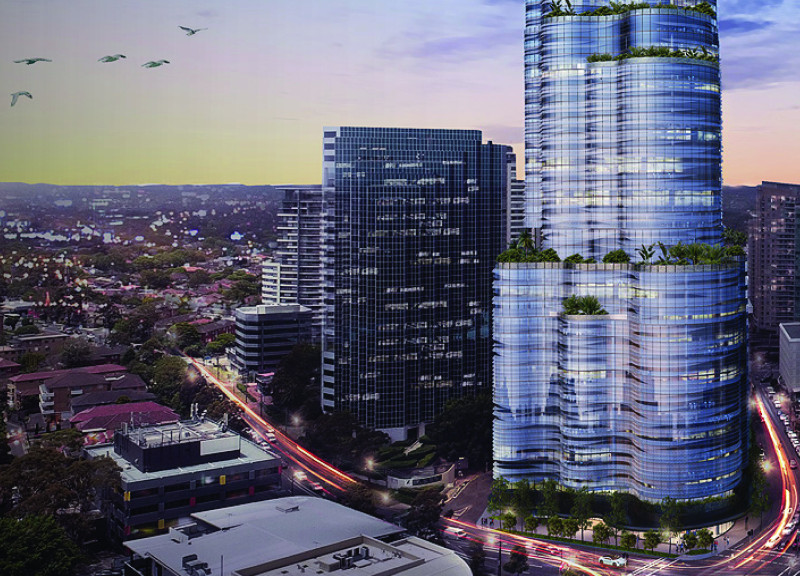5 key facts about this project
The Cloud is situated in Sydney, positioned at the western edge of the Chatswood Central Business District (CBD). This area is becoming a secondary CBD within the Eastern Economic Corridor. The design aims to serve as a landmark and gateway, integrating itself into the urban environment while providing modern workspaces that respond to changing needs.
Design Concept
The Cloud's concept was inspired by changes in workplace dynamics that emerged during the COVID-19 pandemic. Unlike traditional office designs, which often have strict layouts, this building adopts a flexible, cloud-like form. This shape is formed by interconnected "clouds" surrounding a central core. Each cloud serves as an open-plan work environment. The design encourages adaptability and social distancing, reflecting contemporary work requirements.
Structural Organization
The building features three distinct tiers. The lower tier contains corporate offices, with the Google offices being a significant anchor. This arrangement highlights the importance of major companies in the local business landscape. The middle tier is dedicated to small businesses, promoting a diverse and collaborative work setting. The upper tier includes restaurants and bars, adding to public engagement and creating a lively atmosphere that invites interaction. By placing corporate functions at the base, the design emphasizes their importance in supporting the wider community.
Sustainability Features
Sustainability is a central focus of The Cloud. Its façade includes a translucent shading system, which helps with passive cooling and solar control. This reduces the need for energy-intensive mechanical systems. The building is designed to maximize natural ventilation and air intake. Its ripple form is intended to lessen wind impacts, promoting a comfortable environment for its users. Raised garden levels filter polluted air, improving air quality within the building.
Material Considerations
While specific materials are not detailed, the use of translucent shading elements suggests thoughtful attention to thermal performance. The design promotes the integration of natural elements and architectural features, aiming for a balanced relationship with the surroundings. This approach indicates a commitment to creating a workspace that is efficient and healthy for occupants.
The Cloud has smooth, curved walls at the ground level that facilitate fluid movement between indoor and outdoor spaces. This distinct form not only gives it a unique presence but also allows for ample natural light. The thoughtful design enhances the experience for those who occupy it, contributing to a more inviting atmosphere.






















































